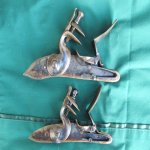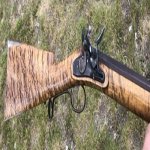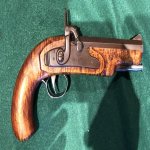I bought one of the TOTW flintlock assemblies to complete a restoration of a 1800 flint fowler (original lock had been lost). The lock needed some shaping to fit the existing lock plate orifice .
Now I have the lock plate fitting perfectly but the original lock, #### and frizzen were supplied in a light grey finish and the fitted areas are shinny bright steel.
How are most modern locks finished? Are they polished to bright steel and oiled or maybe browned with "plum brown ? Just didn't want to mess up the project.
Now I have the lock plate fitting perfectly but the original lock, #### and frizzen were supplied in a light grey finish and the fitted areas are shinny bright steel.
How are most modern locks finished? Are they polished to bright steel and oiled or maybe browned with "plum brown ? Just didn't want to mess up the project.














































































